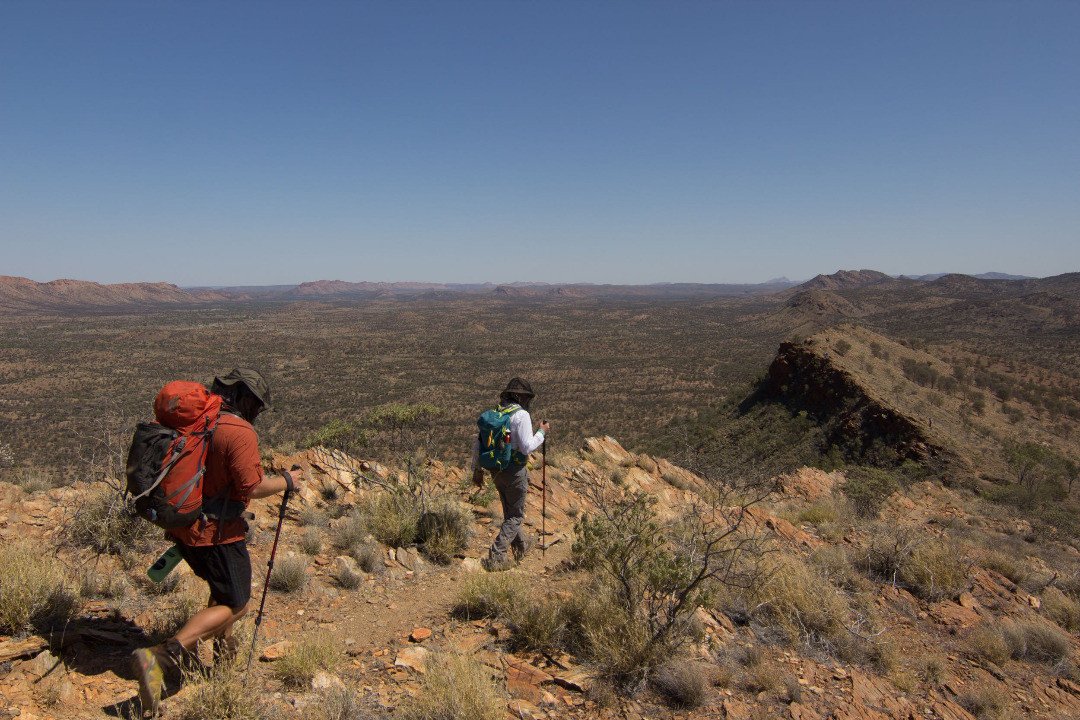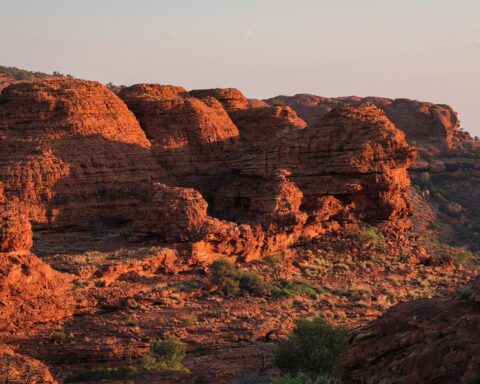A once-in-a-lifetime trek along the spine of the spectacular West MacDonnell Range, the 223km Larapinta Trail is fast hitting the worldwide top hikes lists. End to end, the trail requires at least 14 days. But if you don’t have the inclination, time or ability to tackle the entire route, rest easy because the proximity to Alice Springs makes it simple to do smaller sections with no trouble. That said, the sections range from moderate to very hard, so you’ll need to be reasonably fit and well prepared to take on any of them.

The route is split into 12 sections that together run from the Alice Springs Telegraph Station as far west as Mt Sonder. Before you even head off, take a little time to explore the area’s early European history at the station.
The rugged track winds through the arid landscape, giving access to some of the West MacDonnell Range’s best-known features, including Simpsons Gap, Standley Chasm, Serpentine Gorge, Ochre Pits and Ormiston Gorge. Another highlight is Counts Point, which provides distinctive views along the quartz ridges of Heavitree Range out to Mt Zeil and Mt Sonder.

The chance to wander along the ancient Finke River is a highlight of section 10, between Ormiston Gorge and Glen Helen Resort. At just over 10km, this section is one of the trail’s most popular day trips and takes just four to five hours.
If you are up for more of a challenge, then section 4, Standley Chasm return, will reward you with what is regarded as some of the trail’s best scenery. Allow eight to twelve hours to comfortably complete this 20km section, which is rugged, steep and classified as very hard.

The end point of the trail, Mt Sonder rewards the hiker with amazing 360-degree views back to the east across the West MacDonnell Range, west to Mt Zeil, north to the Tanami Desert and south to the Gosse Bluff crater. At 1380m Mt Sonder is the Northern Territory’s fourth highest mountain. In fact, the 15.8km section 12, Mt Sonder return, is another of the trail’s most popular day trips, even though it is a steep walk that is classified as hard. Be warned, you need to make a really early start on this walk.
As well as being sites of scenic beauty, many of the spots the trail visits are also sacred to the Arrernte people. For the traditional owners the land has song lines, or dreaming tracks, that tell the region’s cultural history.
Special campsites are provided along the route for use only by trail walkers. July is the busiest month on the trail, so if possible, try to walk in May, June or August instead. Just remember that winter nights will be very cold. In wildflower season you may even be lucky enough to see the arid countryside come alive with the bright blooms. The trail is very well-organised with options available for as much or little support as you want, including guided treks, transfers and food drops
Download AllTrails, and start planning your trek through the heart of the Red Centre today. Adventure awaits!





